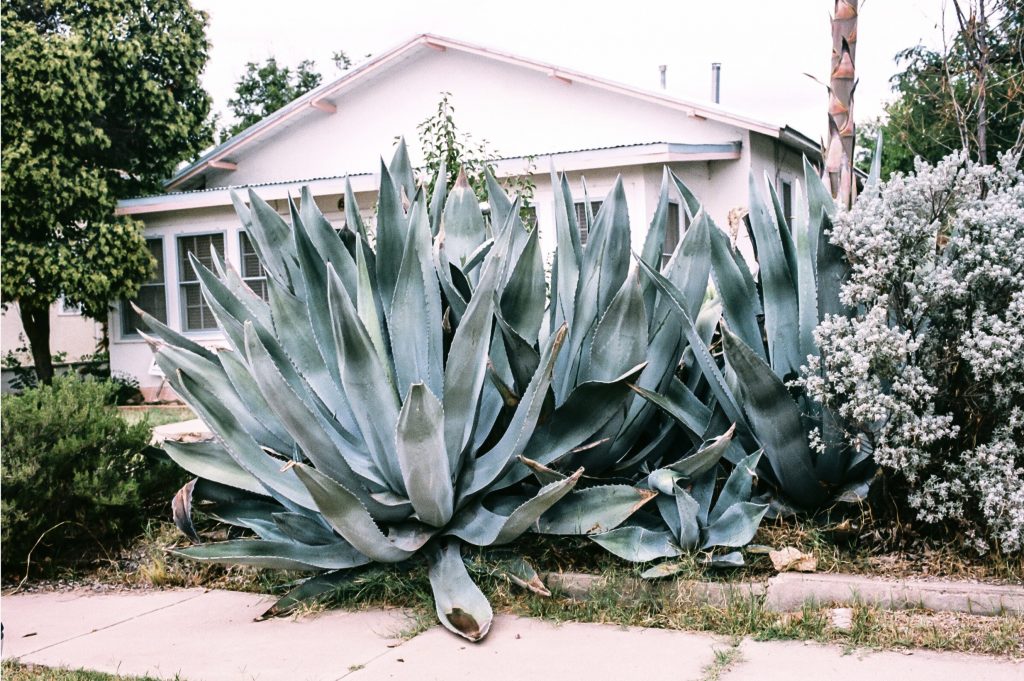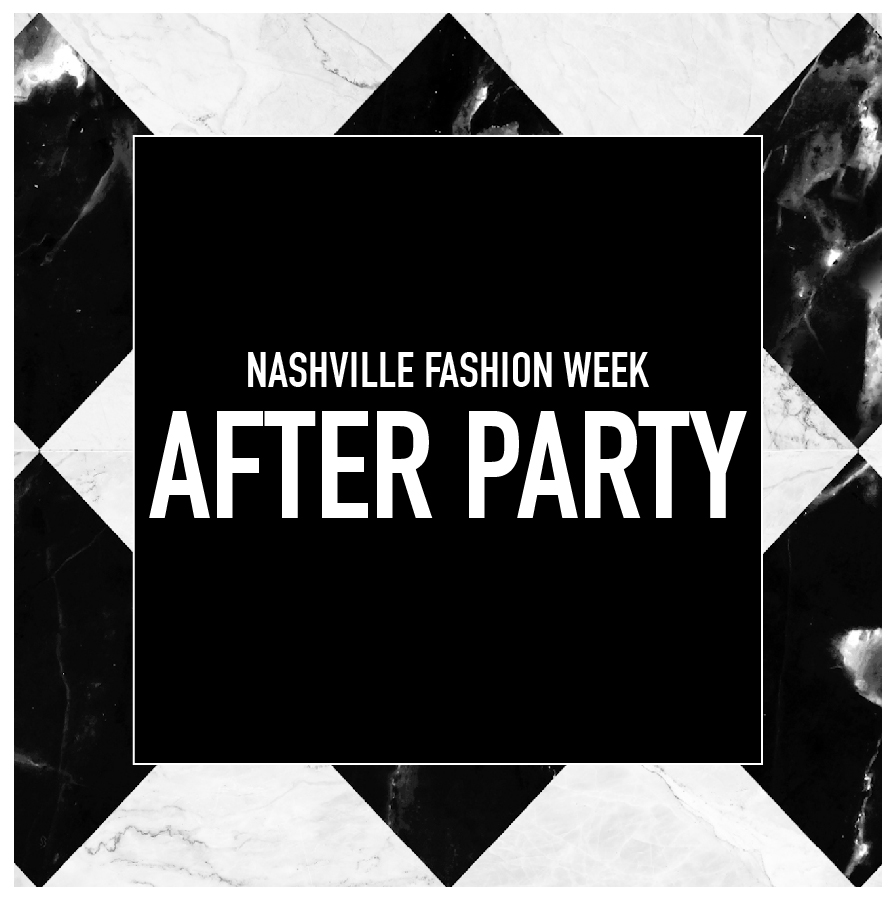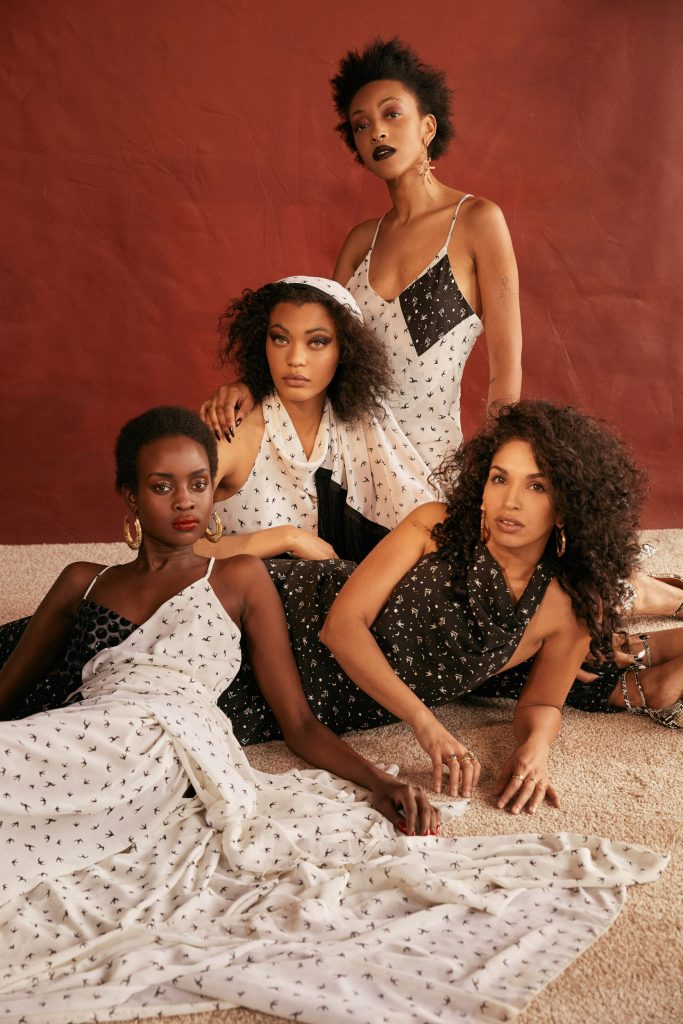
“This girl hits the town. She’s going to go to Sparkle City, she’s just going to twirl, and she’s going to do a split at the end of a Donna Summer song,” Maria “Poni” Silver tells me from her East Nashville basement-turned-studio.
“I have to have like a different persona per piece, actually,” Silver continues, motioning to the twenty-or-so pieces hanging in front of me. “I think, Where is this person going to wear it? and then I usually come up with a story about what she’s doing in it.”
Unprompted, this is how Silver usually describes her designs. Not in terms of fabrics, or textures, or influences—though she can and will gladly talk to you about all of that—but in terms of people. Whether it’s someone doing their best Studio 54 at Sparkle City (in case you haven’t been, it’s Nashville’s go-to disco bacchanal) or a woman walking through downtown, “protected” by the brick pattern on her jacket, Silver’s separates are made with a diverse cast of real-life characters in mind. And that makes sense, considering she’s assumed many different roles throughout her life.
Before she was one of Nashville’s most talked about designers, she was the drummer in The Ettes, a garage-y three-piece that toured internationally and released a string of acclaimed EPs in the late aughts. The band split, but Silver went on to co-found Fond Object Records with her fellow Ettes members, Lindsay “Coco” Hames and Jeremy “Jem” Cohen. Now, she plays in guitar-drum duo Gods of the F*cking Sea with Third Man Books’ Chet Weise.
And before she was a member of Nashville’s alt-rock elite, the Dominican-American designer was a pseudo go-go dancer in Miami, a student at The Fashion Institute of Technology (FIT) in New York, and a seamstress at a Broadway costume design house. While you can see traces of all this in her work—there’s a Debbie Harry-esque jumpsuit here, a beachy floral print there—her new stuff draws from a different time period: her early childhood. To understand Silver’s latest collection (more on that later), you have to understand where she came from.
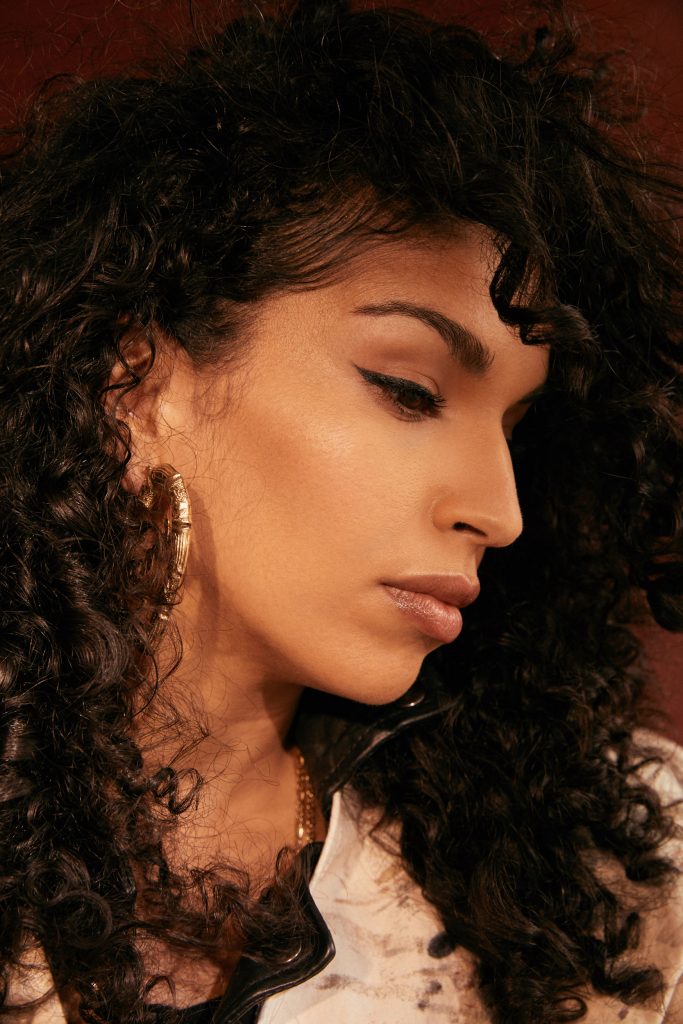
The daughter of Dominican immigrants, Silver was born and raised in Jackson Heights, Queens, one of the most diverse neighborhoods in New York (The Daily Times and New York Times contend it’s one of the most diverse in the country, and there’s even a three-hour documentary about the neighborhood). Silver’s block was home to Chinese, Colombian, Greek, Puerto Rican, and Dominican families, and she has fond memories of Halloween block parties and scheduling hangs with her best friend in a quaintly analog fashion. “If I wanted to get her attention, I would yell out the window for her to come outside and hang out,” Silver says, laughing.
When Silver was ten, her family relocated to West Palm Beach for her dad’s job with AT&T. West Palm was . . . a change in pace.
“I didn’t realize how different [Queens] was until we moved to South Florida,” Silver explains. “At that time when we moved there—it was like probably early ’90s or something—I just realized how white certain areas were . . . Compared to where we were living, I thought that we were living on a farm. We were just in the suburbs, but to me it felt like farm living.”
Farm or not, Silver got into fashion while living in Florida. She made her own homecoming dress—worn with combat boots, naturally—and moved to Miami to attend “this random art school that doesn’t even exist anymore” after graduating high school.
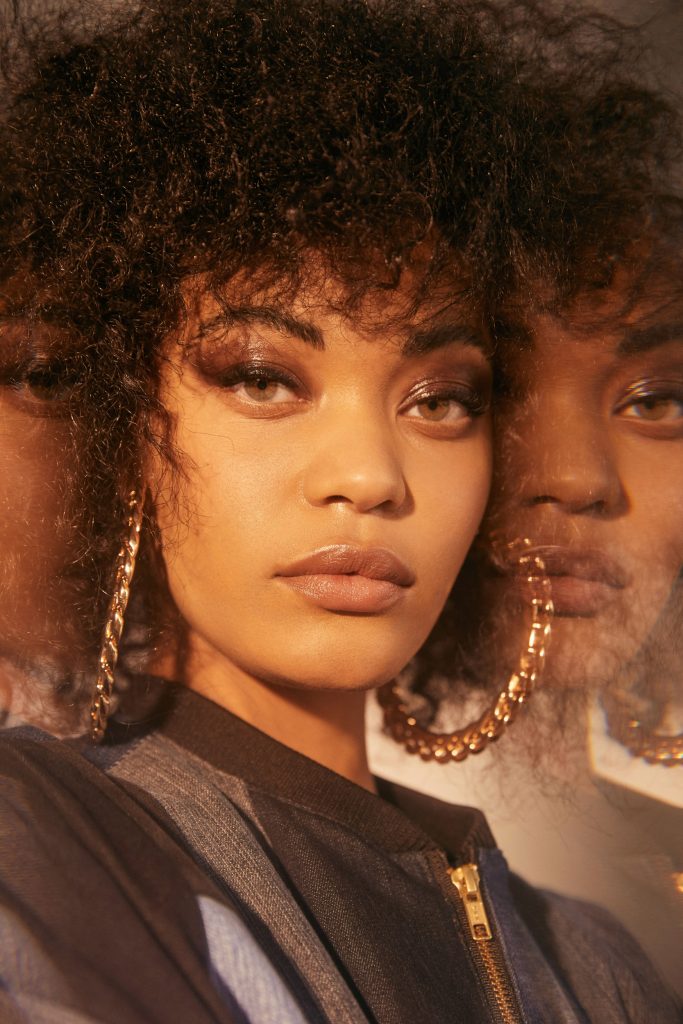
In Miami, an eighteen-year-old Silver turned to one of her other lifelong passions, dance, to make extra cash. With fifteen years of experience under her belt, she joined a local troupe that hit the Miami club circuit. “It was like the big feathered headdresses situation,” she remembers, laughing. “Very Copacabana, and we would put on these shows right before the club opened. I didn’t even know these clubs existed, and they were massive places. There was one that Prince owned called the Glam Slam, so you’d come in and there’d just be this great, grand show and drag queen performers.”
It wasn’t long before she started designing the feathered, sequined, and fringed attire for her troupe. The dancing and designing was great—school, on the other hand, not so much. “After two years at this weirdo school, I realized that I just hadn’t really learned anything,” Silver explains. “[With] fashion, I don’t necessarily believe that everyone’s path needs to be getting a degree. You can intern in fashion and work your way up and get to where you need to go.”
Her path would involve a little bit of both. She enrolled at FIT and shortly after graduation began working in the millinery department of a Broadway design house. Because, as Silver explains, different houses bid on different scenes (instead of one house taking on all the costumes for one play), she’d often construct pieces for totally different worlds—sometimes all in one day. “You’re working on like ten different shows at the same time, which is really great,” she says. “At that time I was working on Mamma Mia!, Rent, and 42nd Street, all at the same time.”
Even with her dream job and a rent-controlled apartment in the East Village, Silver couldn’t resist the proverbial pied piper that tempts nearly all twentysomethings: the obligatory move to L.A. So inspired by a boyfriend and a healthy dose of naivety, she left New York. But the West Coast wasn’t exactly the Queens native’s vibe.
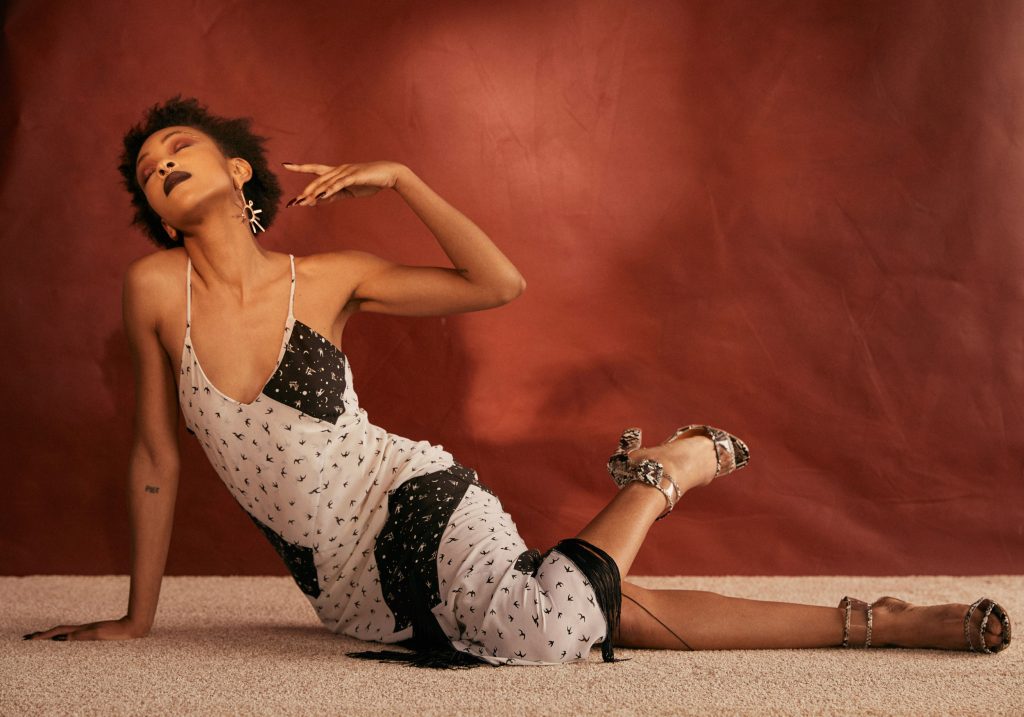
“I remember the plane going down and then my heart sinking into my stomach, and just being like, What the fuck did I just do?” she says. “I still can’t explain why I hated L.A. so much. I go back and visit now, and it’s totally lovely and it’s fine. Living there, I really felt the East Coast-West Coast divide—and I really sided with Biggie. Even though Tupac was so hot [laughs]. I’m East Coast. It just didn’t feel right—the ocean was on the wrong side!”
One silving lining did emerge from the move, though. Silver met fellow future Ette Hames while working retail on Melrose Ave. Naturally, they started an “air band” in the denim closet of the shop they both worked for. The air band soon became a real band, and The Ettes were formed.
“It never even occurred to me to play,” Silver explains, still kind of surprised herself. “I used to go to local shows constantly, but I never looked at the band and said, ‘I want to be up there and play music.’ [But] when I was out in L.A., and I was like angry at myself and life, yeah, that’s when I met Coco and randomly started taking lessons.”
From here, The Ettes’ story is probably similar to that of your favorite mid-aughts buzzband. The trio released the albums (in this case, smart, well-received garage rock), did the international tours (both on their own and opening for acts like The Black Keys and The Dead Weather), and made all the right appearances (Fallon, KEXP, SXSW). Then, with little fanfare and no hard feelings, they just kind of stopped playing. Chalk it up to the realities of touring, the recession, or simply getting older, but it happens. However, unlike some of their contemporaries (ever wonder what The Von Blondies are up to?), The Ettes would go on to start something else that was equally awesome: Fond Object. The beloved Eastside record store/clothing boutique/venue opened in 2013 and added a second downtown location last year.
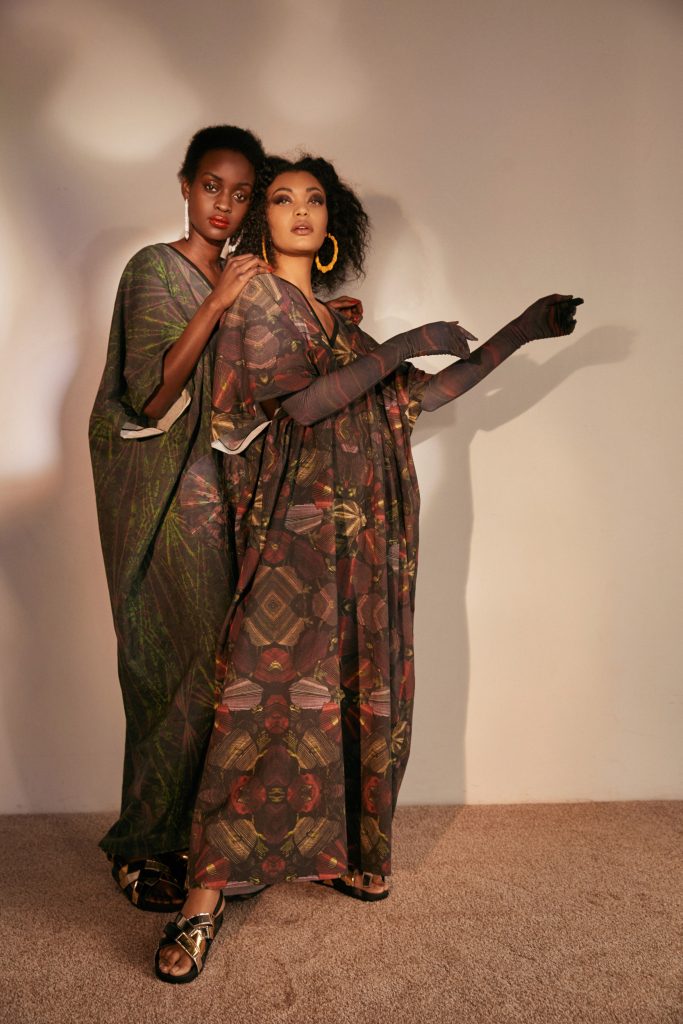
But even before opening Fond Object, Silver—who’d moved to Nashville in 2008 after years of visiting the city on tour—was making entrepreneurial moves. She showed at her first NFW back in 2012, but The Ettes’ touring scheduling kept her from setting up something more permanent. By 2014, though—by which point touring was over and Fond Object was off the ground—Silver was ready to dive fully into fashion.
“I just knew that it was always something that I would go back to,” she explains. “It was just that fork in the road that kind of took me in a different direction in life. So it wasn’t until 2014 that I actually put things into production and started selling things in size ranges and stuff like that . . . I think the transition took a while, but I wasn’t in a rush. I’m not in a rush, and this is what I’m trying to do: a slow build.”
If the past seven years are any indication, the slow build has worked. She’s shown in five Nashville Fashion Weeks, she won NFW’s Rising Star Award in 2016, and she’s the recipient of this year’s Fashion Forward Fund, which means she’ll attend the Decoded fashion summit in London later this year. She’s also made custom pieces for folks like Margo Price and Ruby Amanfu, and she opened her first brick-and-mortar on Woodland earlier this year.
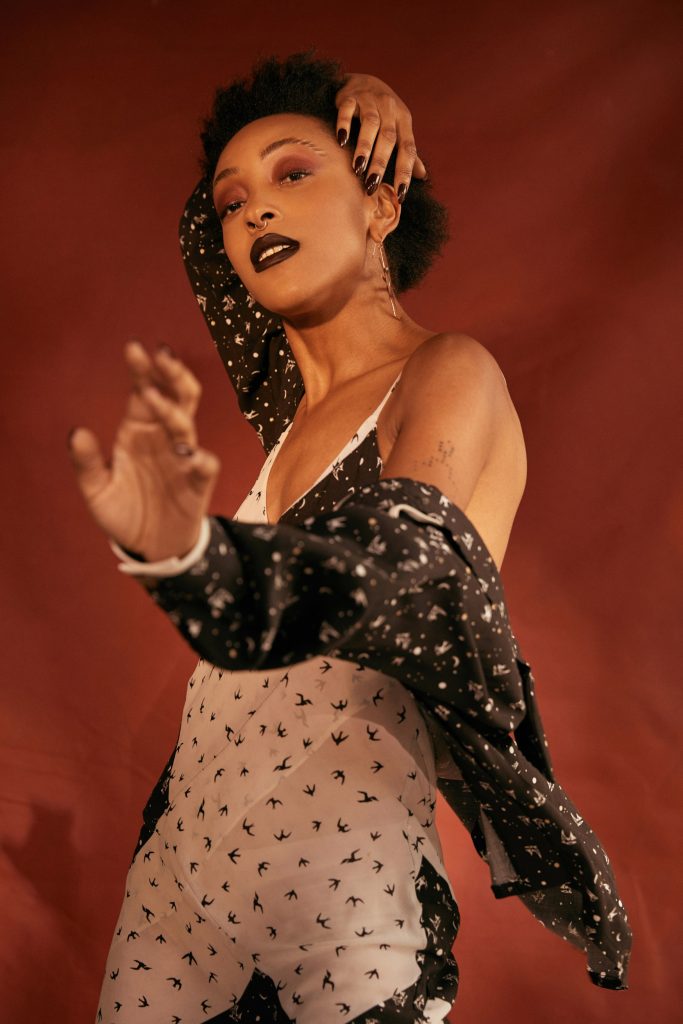
For the collection that won her the Fashion Forward Fund, Silver looked back to Queens. More specifically, she looked back to 1973, when her mom first immigrated to the US to be with her father. Suddenly Silver’s mother, who’d grown up in the mountains of the DR, found herself on 103rd Street, smack dab in the middle of Manhattan (the family wouldn’t move to Queens until Silver was born a few years later). While designing her latest pieces, Silver drew inspiration by asking her mom about that period.
“My dad will be eighty this year, and my mom is seventy-four, and it just made me think about rough things that you don’t want to think,” she explains. “That they’re not going to be here forever, and did I ask them enough stuff?”
Though the process has forced Silver to reckon with her parents’ mortality, it’s given the designer a new insight into her history. She heard stories she’d never known about: how her mom used to hang her feet outside her apartment window when she was hot, or how she’d play dominoes with her neighbor Francia.
It’s these little slices of life—the everyday minutia we seem to never ask our families about until it’s too late—along with more concrete elements (like her mom’s love of birds, or her penchant for primary colors) that come out in the collection. There are oversized parkas with big, bold shocks of colors; island-y skirts that take you straight to the DR; even a recurring bird print that pops up on everything from dresses to head wraps.
While Silver admits that a large chunk of the collection is made up of these fun, tongue-in-cheek references to her mom, there are also darker themes at play throughout. The colors got darker as she came to terms with her parents’ deteriorating health, and there are even subtle references to dementia in some of the pieces. “There’s a couple pieces that are like patchwork, which was meant to look a little broken,” she explains. “[They’re] kind of more about when you get older and become senile—all those kind of issues that you have to deal with.”
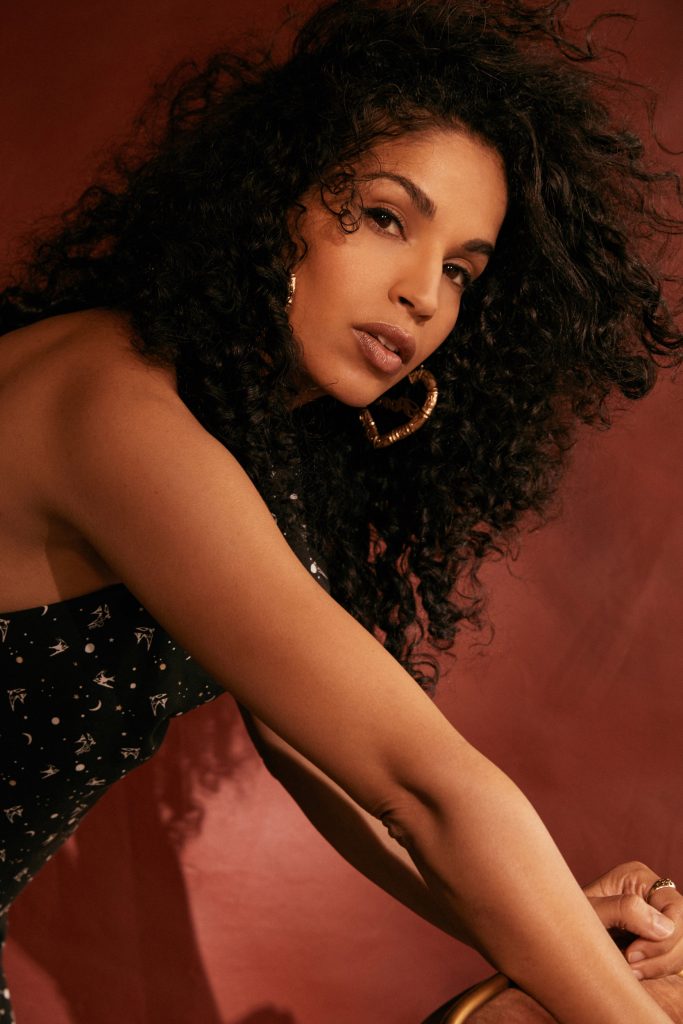
When you consider the narrative surrounding Silver’s family—that of an immigrant family finding success in the US—the collection is also a political statement. As Silver aptly puts it: “If [my mother] was trying to do this today, would she have been able to come over? Then what would that have meant? Would she have not married my dad? Would she have just stayed in the DR and married somebody else? Would I even exist?”
They’re sadly legitimate questions, especially when you consider that Silver’s parents emigrated from a nation that shares an island with one of the “shithole countries.” But luckily for us—and for Nashville fashion—she exists, sharing big, important stories through an artistic medium that often doesn’t tell enough of those stories. And though Silver says she’d like her customers to consider and discuss the narrative behind her clothes, she’s ultimately happiest when people are happy in her clothes.
“I want them to feel super confident when they put on one of my pieces. Walk out the door and be like, ‘I’m ready for whatever the day is going to have come at me,’” she says. “If someone leaves with a piece on and is like, ‘I feel good today,’ then I did my job.”
Job well done.
Silver’s latest work—a series of caftans that incorporates pieces by local artist Kelly Williams—are on display now through June 30 at Noelle’s Keep Shop.
Suggested Content
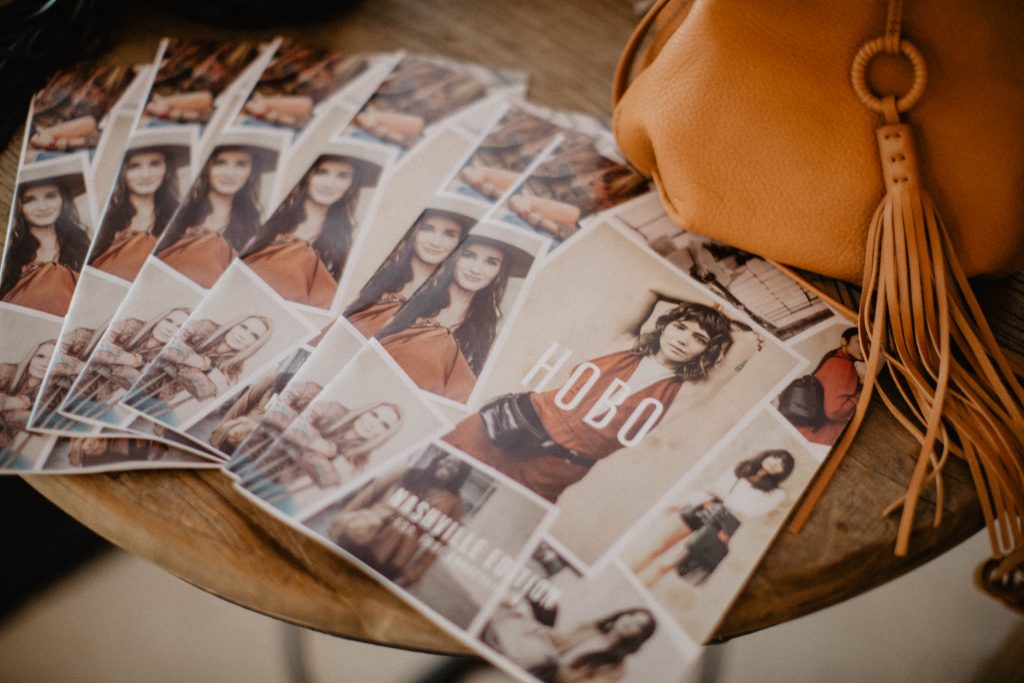
PHOTO RECAP: Hobo Leather Lounge
Last week we went to the Hobo Leather Lounge at White's Mercantile on 12th South. Here's what we saw.

